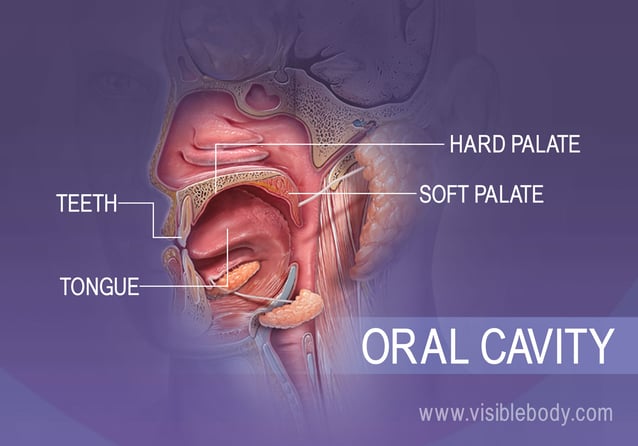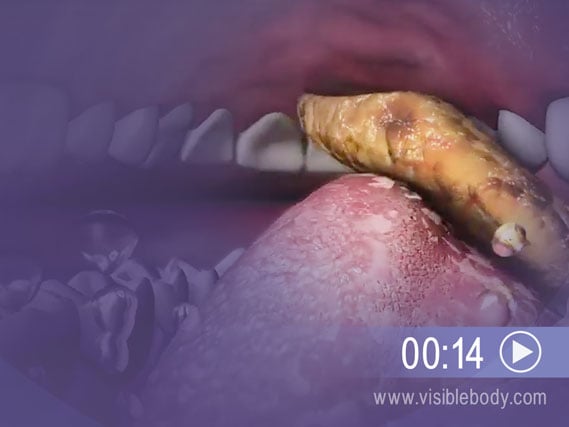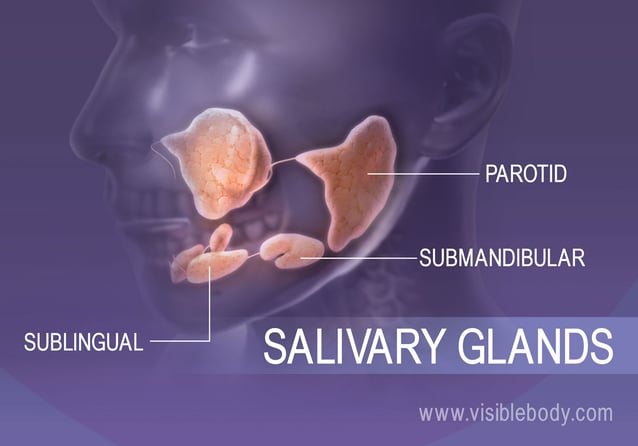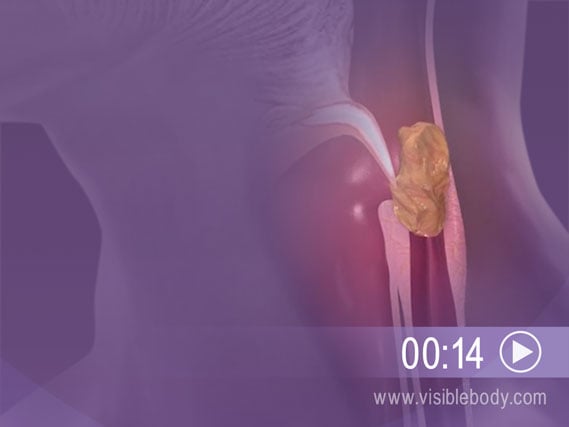
The oral cavity is bounded by the teeth, tongue, hard palate, and soft palate. These structures make up the mouth and play a key role in the first step of digestion: ingestion. This is where the teeth and tongue work with salivary glands to break down food into small masses that can be swallowed, preparing them for the journey through the alimentary canal.

The movement of the jaw enables the teeth to grind food into small fragments. The mandible, or jawbone, is the only bone in the head that moves, and the points where the temporal bones connect to the mandible make up the only two movable joints in the head. The official name for chewing is mastication. This is the first step in mechanical digestion.

Saliva secreted by salivary glands aids the mechanical and chemical process of digestion. Saliva is about 99% water and not only moistens food but cleanses the mouth, dissolves food chemicals so they can be tasted, and contains enzymes that start the chemical breakdown of starchy foods. There are three pairs of salivary glands: parotid, sublingual, and submandibular (also called the submaxillary gland).

The tongue manipulates the chewed food into a small mass called a bolus, then moves it to the oropharynx. The next steps are involuntary: the bolus passes through the pharynx, the epiglottis closes off the trachea and directs the bolus down the esophagus, and peristaltic waves move the bolus into the stomach.
A description of the oral cavity from the 1918 edition of Gray's Anatomy of the Human Body.
Visible Body Web Suite provides in-depth coverage of each body system in a guided, visually stunning presentation.
A short article about the role of the mouth in digestion, from University Hospitals’ Health & Wellness Library.
When you select "Subscribe" you will start receiving our email newsletter. Use the links at the bottom of any email to manage the type of emails you receive or to unsubscribe. See our privacy policy for additional details.